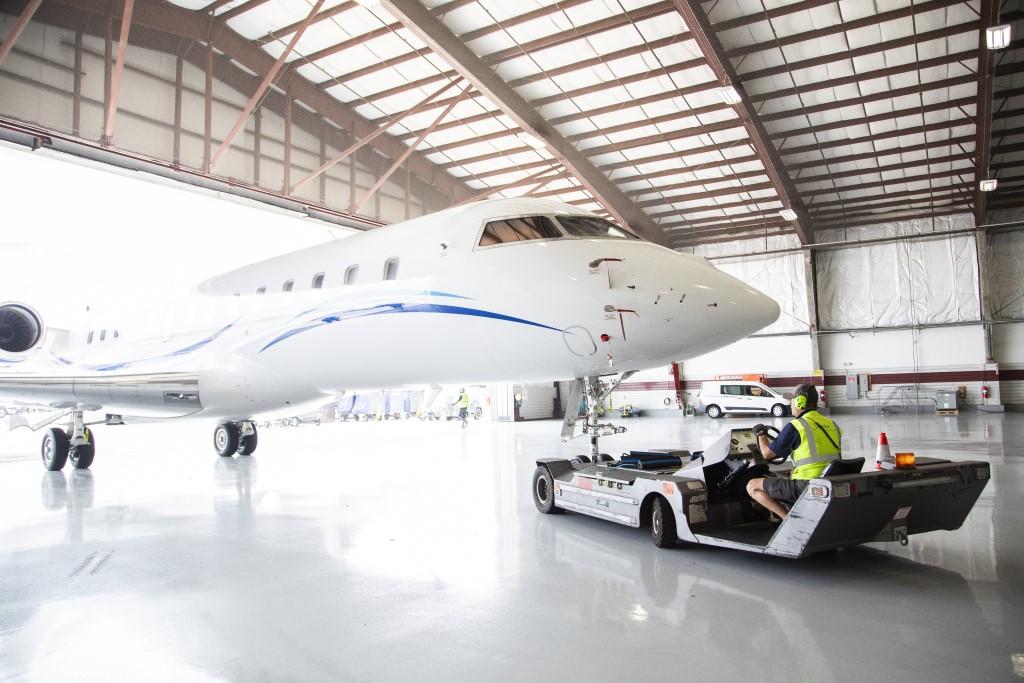Zeroing In on Carbon Neutrality: Strategies for FBO Operations

 Jovan Philips, Signature Aviation Product Manager and Head of the Signature Renew Program, shares the roadmap Signature Aviation developed and deployed to achieve carbon neutrality and take meaningful steps on its journey to net-zero.
Jovan Philips, Signature Aviation Product Manager and Head of the Signature Renew Program, shares the roadmap Signature Aviation developed and deployed to achieve carbon neutrality and take meaningful steps on its journey to net-zero.
Strategic Path to Carbon Neutral Aviation: Signature Aviation's Roadmap
Earlier this year, Signature Aviation became the first aviation services company to reach carbon neutrality for Scope 1 and 2 emissions across its global network. The journey toward carbon neutrality requires an intricate approach to absolute emission reductions and offsetting strategies. This article explores the strategic deployment by Signature, offering a roadmap for private aviation terminals and other businesses aiming to address their carbon footprint.
Emissions Measurement and Management: Assessing the Path Towards Net-Zero Horizons
In 2021, Signature's Environmental Director, Heather Frost, led the challenge of measuring, consolidating, and reporting emissions for over 200 bases. This collective effort resulted in a materiality assessment, a pivotal first step toward developing a comprehensive ESG and emissions reduction strategy. Signature aims to achieve net-zero by 2050, with interim targets of a 29% reduction by 2025 and 50% by 2030.
Demystifying “Net-Zero” in Aviation: Understanding the Impact and Meaning
Achieving net-zero involves reducing or avoiding greenhouse gas emissions and capturing the remaining emissions at the point of generation or removing them from the atmosphere. While carbon removal is still an evolving concept, Signature Aviation has led the aviation community with a strategy focusing on energy demand reduction, the electrification of ground service equipment, and renewable energy deployment.
Reducing Energy Consumption Onsite: Long-Term Strategies
Responsible energy management is at the forefront of Signature's sustainability efforts. With a rich history in infrastructure development, Signature Aviation built the first LEED-certified FBO in North America, ultimately expanding to 30 LEED-certified projects and making LEED certification the minimum standard for all new construction. Environmental and sustainability measures including energy-efficient systems, LED lighting, and occupancy sensors, are now standard in all renovations. These efforts led to a 9 percent reduction in electricity consumption between 2021 and 2022.
Eco-Friendly Ground Support Equipment: Signature's Approach to Green Operations
Running an FBO involves a diverse fleet of powered equipment, from ground power units to deicing machines. In 2021-2022, Signature deployed over 1,160 new electric GSE units, prioritizing efficiency upgrades. The company stands out as the largest FBO purchaser of Lektro electric tow tractors, and most traditional golf carts have been replaced with electric equivalents.
Advancing Renewable Energy: The Role of Solar Power in Aviation
Signature has embraced solar power as a key element in its strategy. Completed solar installations at Westchester County Airport and Newark Liberty International Airport contribute approximately 5,300 MWh of renewable power. The next step is to expand the renewable energy footprint across the global FBO network, conducting due diligence for solar installations on all renovations and new building projects.
Balancing the Carbon Equation: Signature's Next Steps Towards Net-Zero.
Signature is eight years ahead of our goal and aligned with the aviation industry's wider goal of net-zero emissions by 2050. Further, absolute Scope 1 and Scope 2 emissions have been reduced by over 50% against the company's 2018 baseline. In 2022, our commitment to a greener future led us to fully offset our Scope 2 emissions through the purchase of Energy Attribute Credits (EACs) and Green Tariffs, and we also achieved a complete reduction in Scope 1 emissions by investing in Verified Emissions Reductions (VERs).
Learn more about Signature Aviation's Journey to net-zero here.




